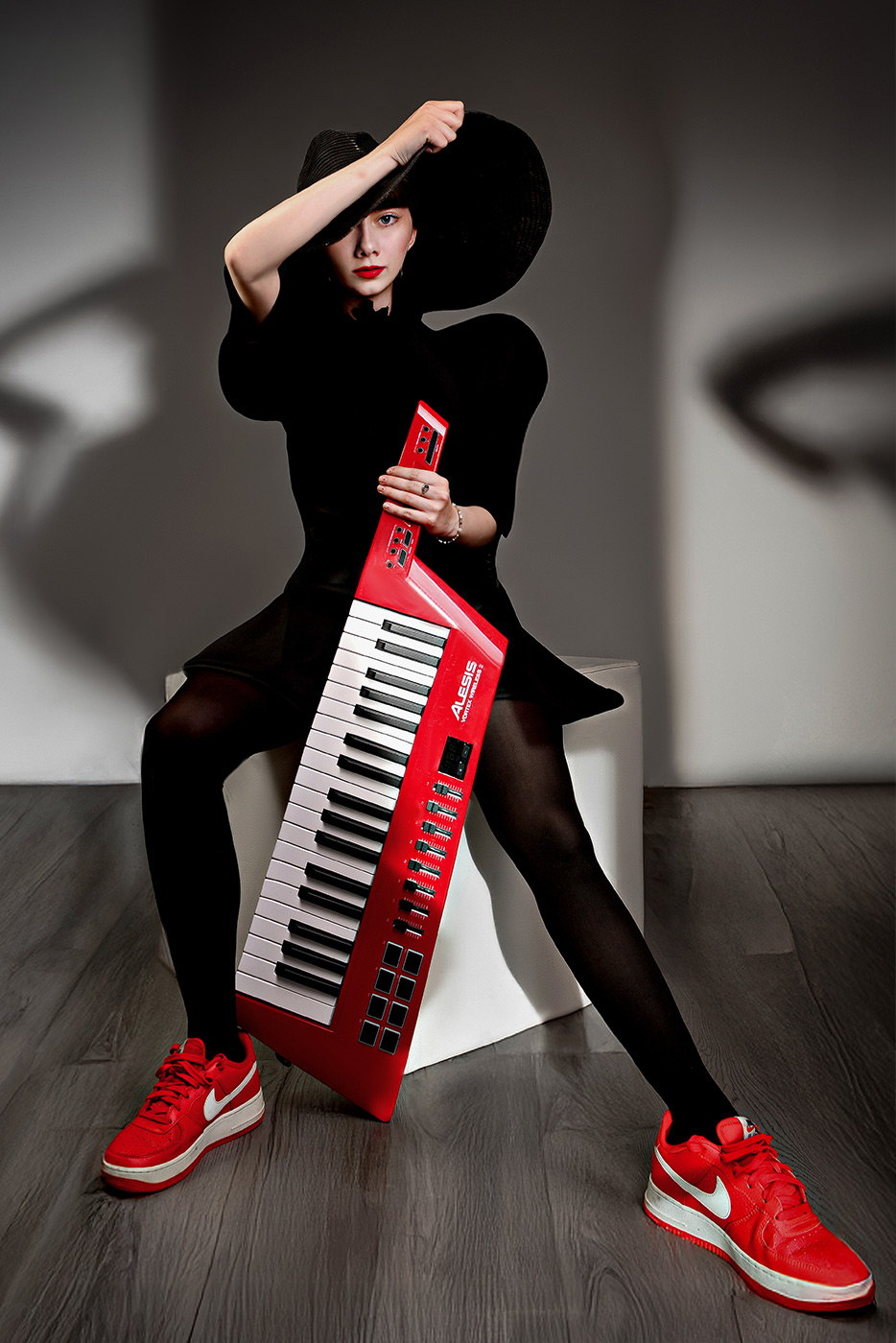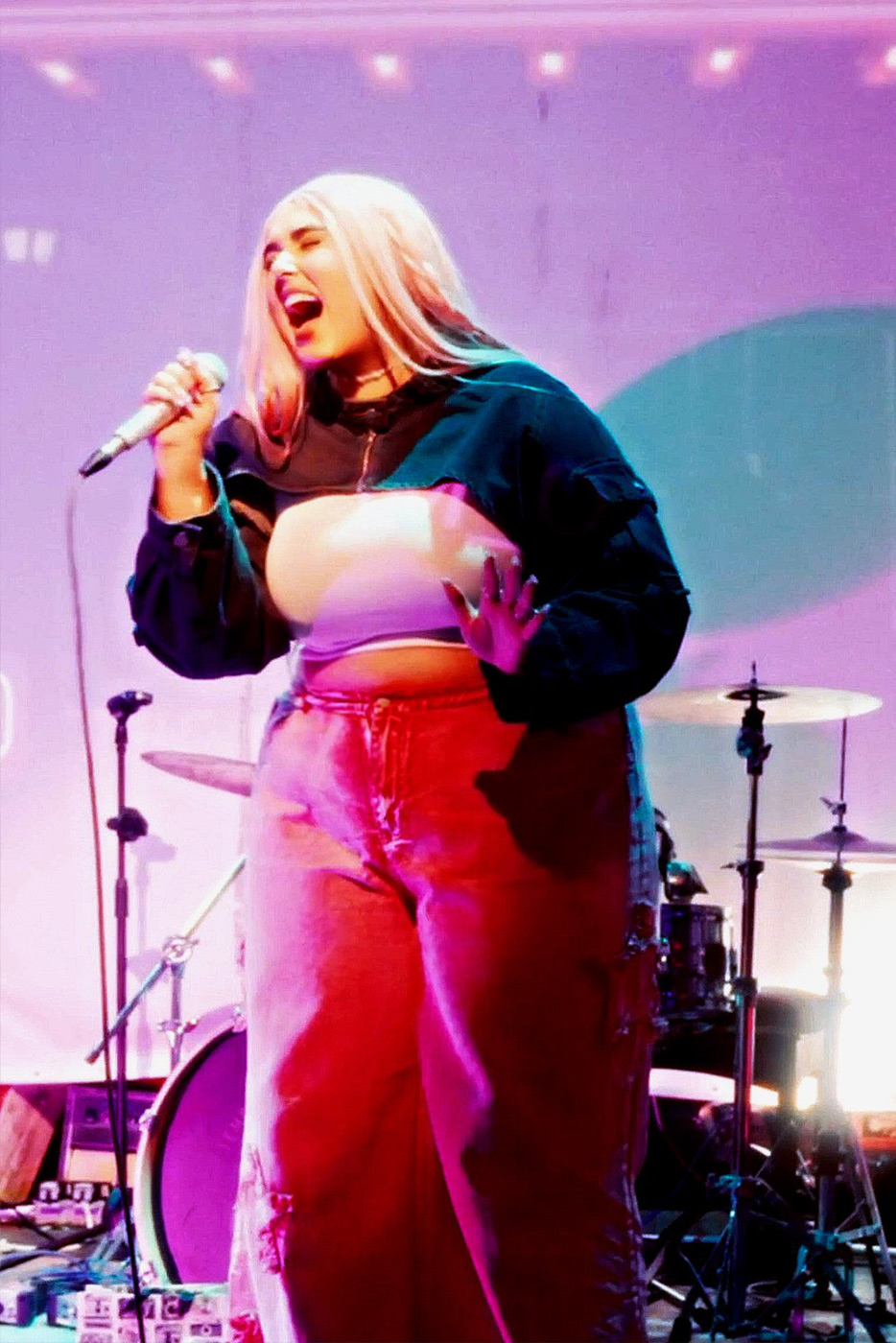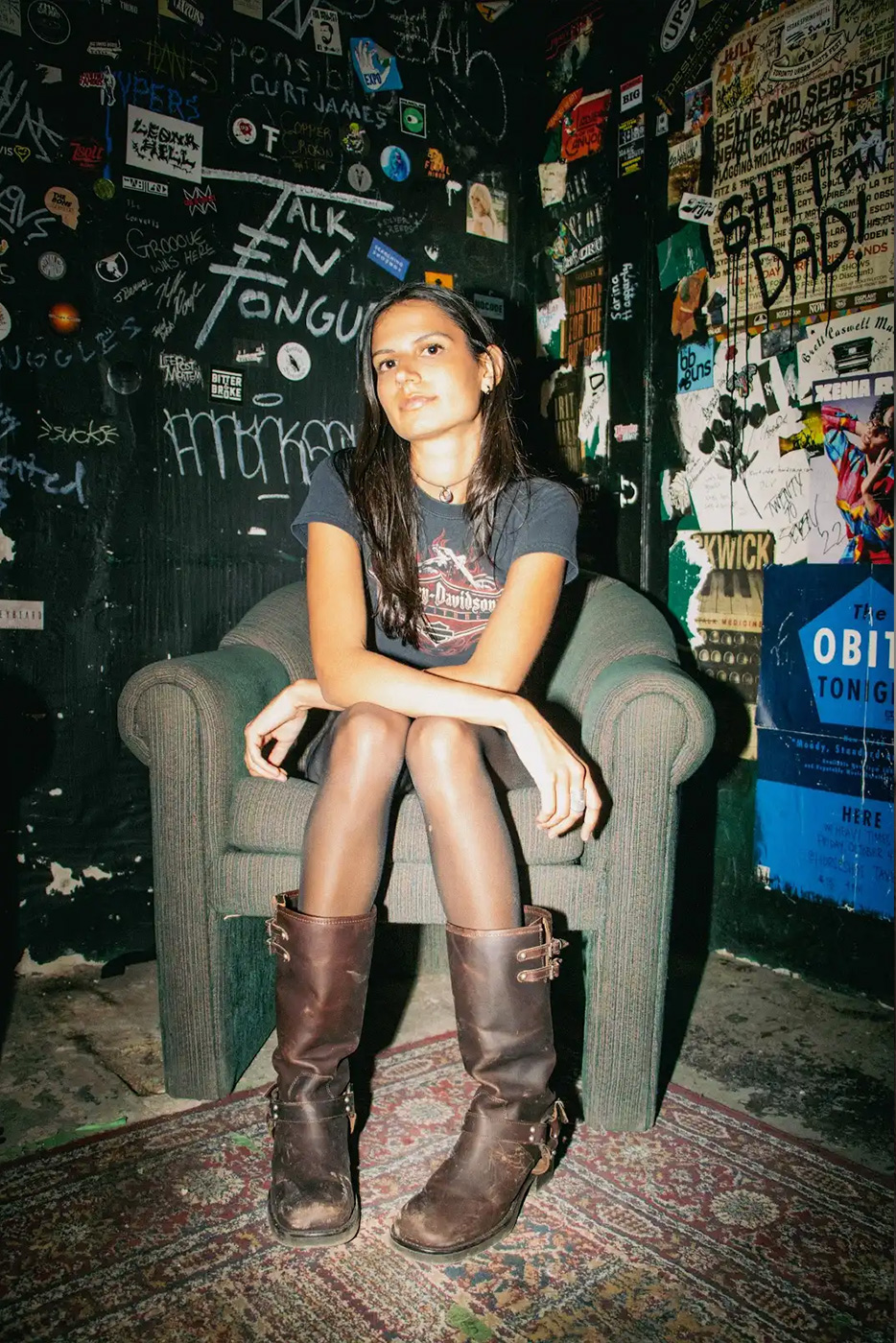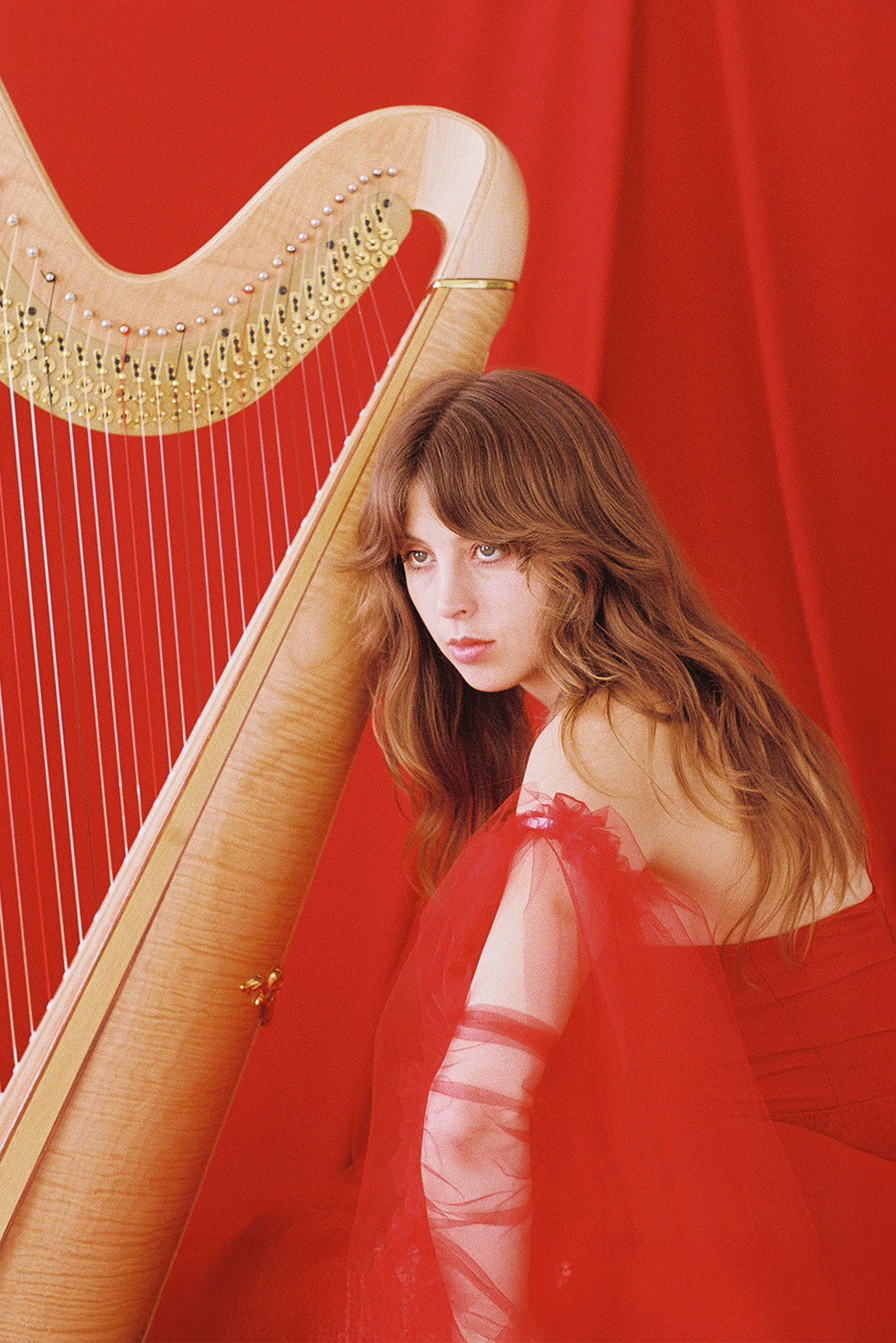Ladies in the Industry – Another Battlefield in the War for Equality
Even in 2025, when the music industry claims to be rewriting its songbook, tired old stereotypes continue to affect female artists directly.
Though it’s no secret that the music industry is a male-dominated space, what does this mean? How does it affect other artists who don’t fit the mould? And, more importantly, what can we do as record labels and corporations to minimize the negative impacts of not having an inclusive environment?
Funktasy sat down with four up-and-coming female musicians to hear their perspectives on what it means to be a woman in the industry, the struggles they’ve faced and how they overcame them.

EMI – Courtesy of Vanja Lisac/Urban Magazine
EMI
Emi Trnka, known artistically as EMI, is a pianist and composer hailing from Eastern Europe. With her rigorous training and musical talent, EMI possesses the ability to convey sincere emotions and stories through her music that connect with her audience.
But despite her abilities and artistic vision, EMI faces many of the same systemic challenges millions of other female artists encounter in the music world, like being boxed in.
“There’s often a pressure to fit into certain expectations of how you should sound, look, or behave,” EMI shares. “But what encourages me is the growing community of women who support each other, who collaborate instead of compete. That solidarity is powerful. We’re not just asking for space anymore; we’re claiming it, together.”
EMI’s story is layered with additional nuance as an artist emerging from Eastern Europe – a region where the music industry can feel both promising and precarious. While the digital age has opened more doors for global discovery, the on-the-ground realities for independent musicians in Eastern Europe remain uniquely difficult.
Remaining consistent, authentic and honest is essential to artistic branding, she says.
“Artistic branding starts from within. It’s about being consistent with who I am, not just how I look or sound. I focus on building a world around my music that feels honest, vulnerable and a little bit dreamy,” she says. “I’m not interested in creating a perfect image. I’m interested in creating a recognizable feeling.”
“If labels commit to diversity and genuine representation, not just as a trend but as a core value, they can help break stereotypes and open doors for many talented female artists.”

ORR
ORR
For rising indie-soul artist ORR, authenticity is non-negotiable. With powerhouse vocals and a raw, emotional style that draws from icons like Amy Winehouse and Adele, she’s going further than only creating music, but she’s building a movement around vulnerability, femininity and fearlessness. Her artistry is not just about connecting with listeners through the speakers, but rather on a deeper level.
We sat down with ORR and asked exactly how women can overcome these challenges. She had a beautiful perspective on growth in the industry.
“The thing is, musicians should help each other grow. Said ORR, “There’s no real competition. If someone has my song on their Spotify playlist, and then they also have Miley Cyrus’ and Lady Gaga’s songs, and your song, then I want to grow with you, not compete. It’s not about who sells more records anymore. It’s about how we can all grow together in the industry.”
In an industry still dominated by men, ORR’s perspective is clear-eyed and offers a positive spin on the disparity. Rather than focusing solely on barriers, she sees room for opportunity and empowerment.
“I think it’s pretty male-dominated, but I also see a lot of positives in that. Being a woman in this space has its advantages,” she says. “For one, I’m able to show that being a strong woman in music is powerful.”

Katie Mal – Courtesy of Victoria McEwan
Katie Mal
Katie Mal is grinding every day to earn the spot she deserves within the musical landscape.
The indie-alt rock singer from Toronto sticks out for her blend of storytelling-driven songwriting with upbeat melodies. Her biggest inspirations include The Beaches and Boygenius, two all-female fronted powerhouses, as well as ‘90s and ‘70s rock.
“I definitely find it frustrating that the whole industry is so male-dominated, still,” she shares. “I wanted to find female musicians to be in my band, but it was too difficult. My band members are all male, and, although they’re great, it would definitely be nice to have a woman in the band.”
Though rock has had its female icons, the lack of women on stage seems to be still a chronic problem. In a genre largely associated with men, Mal’s presence offers a rare and distinctive perspective.
“I think people will always be more judgy of a woman’s art, whether they are conscious of it or not. That’s just the society we live in, unfortunately.”
But her unique presence within this male-dominated landscape hasn’t proved to be an advantage; rather, the opposite. She knows she’s watched more closely than her male peers by the fans and the whole industry. Her musical talent often isn’t enough to prove her value as an artist.
“I just hope whoever finds my music really connects with it regardless of what I look like at all, because I know with my favourite artists I couldn’t care less what they look like I just love the music,” she shares. “So, I think really owning what you do and making art that is completely you is super important as a woman.”

Mikaela Davis
Mikaela Davis
Lyrically, does a woman’s touch bring more to a song? The answer isn’t so simple. As Harpist Mikeala Davis puts it, “Humans connect with art that speaks to them regardless of gender. As a woman, I’ll feel empowered by a song written from a woman’s perspective–but at the end of the day, art knows no gender.”
Davis, like most of these other artists, started her journey young at age 8, playing harp and studying classical music under harpist Grace Wong. Davis stands out as an innovator, weaving her classical harp roots into an original genre-bending soundscape that spans folk, indie, psychedelic and jam-inspired rock. Davis is a seasoned performer, disturbed by Pitchfork as “rugged altcountry, twangy roots rock, paisley-bedecked Laurel Canyon psychedelia.”
When asked about the male–dominated aspects of the industry, Davis answered with a new perspective.
“This is true especially in the engineering world. I’ve noticed most venues have a male house sound engineer, and most studios have an all-male cast. It’s easy to fall into the stereotype when you’ve learned since you were a kid that girls sing and boys play the drums.”
Davis also brought actual statistics to the table to show the lack of women and other minorities involved in the music industry. “According to Book More Women, only 17.7% of acts at Bonnaroo 2025 were women, with less than 1% nonbinary artists represented, compared to over 80% men. “The imbalance is clear,” she emphasizes. “Book more women.”
The Stories of EMI, ORR and Katie Mal are Evidence That Something in the Music Still Must Change, Something Deeply Rooted Within.
These women navigate a system that often resists their presence, questions their authenticity and demands they do more with less.
In the era of Taylor Swift, and in the wake of last summer’s “Big Pop Three” featuring Charli XCX, Sabrina Carpenter and Chappell Roan, the inclusion is possible.
Real inclusion doesn’t happen by accident. Instead, it happens when record labels, media platforms, booking agents and listeners actively choose to support female voices, not just because they’re women, but because their talent deserves the same attention as a man’s.









